Ditapis dengan
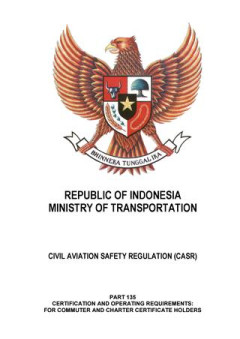
Cetak CASR (Civil Aviation Safety Regulation) − Part 135 Cert. & Opr. Req; …
The kinds of CASR Part 135 fixed wing airplane operations can be authorized as follows: (1) Commuter Airplane. Commuter airplane operations are conducted pursuant to CASR 135. This kind of operation authorizes carriage of passengers and cargo in scheduled operations. A certificate holder authorized for commuter airplane operations is automatically authorized to conduct on demand (nonsche…
- Edisi
- -
- ISBN/ISSN
- -
- Deskripsi Fisik
- -
- Judul Seri
- -
- No. Panggil
- 629.130 2 MIN c
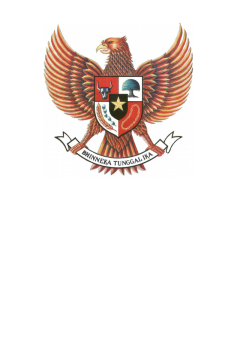
Cetak CASR (Civil Aviation Safety Regulation) − Part 121 Certification & Op…
New rules for operators conducting air transport in larger aeroplanes commence on 2 December 2021. Air transport is a new term that replaces both charter and regular public transport (RPT) and adds medical transport operations such as patient transport. The air transport rules for larger aeroplanes are in Civil Aviation Safety Regulations (CASR) Part 121. CASR Part 121 should be read with…
- Edisi
- -
- ISBN/ISSN
- -
- Deskripsi Fisik
- -
- Judul Seri
- -
- No. Panggil
- 629.130 2 MIN c
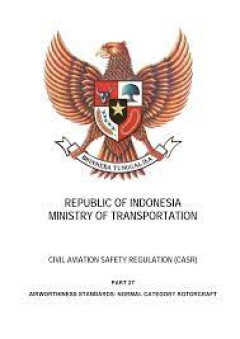
Cetak CASR (Civil Aviation Safety Regulation) − CASR Part 27 Airworthiness …
Part 27 of CASR was developed to specify the airworthiness standards for normal category rotorcraft (such as helicopters). These are rotorcraft with a maximum take-off weight (MTOW) up to 3,175 kg and up to nine passenger seats. Part 27 has been based on foreign legislation, specifically the USA's Federal Aviation Regulations Part 27.
- Edisi
- -
- ISBN/ISSN
- -
- Deskripsi Fisik
- -
- Judul Seri
- -
- No. Panggil
- 629.133 352 MIN a
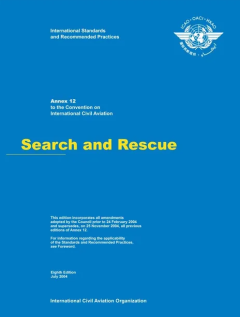
ANNEX 12 Search and Rescue
Annex, which is complemented by a three-part Search and Rescue Manual dealing with SAR organization, management and procedures, sets forth the provisions for the establishment, maintenance and operation of search and rescue services by ICAO Contracting States in their territories and over the high seas. Proposals for Annex 12 were originally made in 1946. By 1951, the proposals had been reviewe…
- Edisi
- -
- ISBN/ISSN
- ANN-00012-008-01
- Deskripsi Fisik
- -
- Judul Seri
- -
- No. Panggil
- 629.135 4 INT s
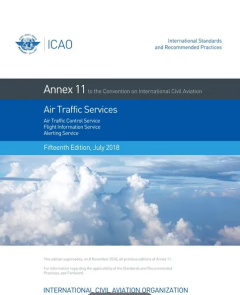
ANNEX 11 Air Traffic Services
The Standards and Recommended Practices applicable to Aeronautical Charts
- Edisi
- -
- ISBN/ISSN
- ANN-00011-015-01
- Deskripsi Fisik
- -
- Judul Seri
- -
- No. Panggil
- 629.136 6 IINT a

Cetak CASR (Civil Aviation Safety Regulation) − Part 69 Air Traffic Service…
bahwa dalam Peraturan Menteri Nomor 1 Tahun 2014 tentang Peraturan Keselamatan Penerbangan Sipil Bagi 69 {Civil Aviation Safety Regulation Part 69) Tentang Lisen^i Rating, Pelatihan Dan Kecakapan Personel Navig Penerbangan, diatur ketentuan lebih lanjut diatur deng^n Peraturan Direktur Jenderal;
- Edisi
- -
- ISBN/ISSN
- -
- Deskripsi Fisik
- -
- Judul Seri
- -
- No. Panggil
- 629.130 2 MIN a
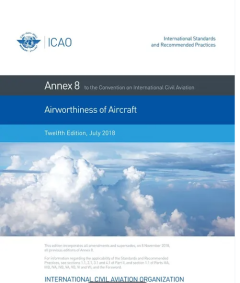
ANNEX 8 Airworthiness of Aircraft
Annex 8 includes broad standards which define, for application by the national airworthiness authorities, the minimum basis for the recognition by States of Certificates of Airworthiness for the purpose of flight of aircraft of other States into and over their territories, thereby achieving, among other things, protection of other aircraft, third parties and property. It is recognized that ICAO…
- Edisi
- -
- ISBN/ISSN
- ANN-00008-012-01
- Deskripsi Fisik
- -
- Judul Seri
- -
- No. Panggil
- 629.132 3 INT a
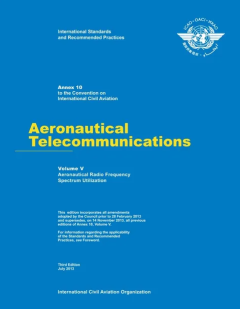
ANNEX 10 Aeronautical Telecomunication
Volume V of Annex 10 contains Standards and Recommended Practices and guidance material on the utilization of aeronautical frequencies.
- Edisi
- -
- ISBN/ISSN
- ANN-00010-003-05
- Deskripsi Fisik
- -
- Judul Seri
- -
- No. Panggil
- 629.132 51 INT a

Cetak CASR (Civil Aviation Safety Regulation) − CASR Part 61 Licensing of P…
Part 61 of CASR 1998 prescribes the requirements and standards for the issue of flight crew licences, ratings and other authorisations, including those issued to pilots and flight engineers. It also includes the privileges, limitations and conditions on such authorisations, and rules for the logging of flight time.
- Edisi
- -
- ISBN/ISSN
- -
- Deskripsi Fisik
- -
- Judul Seri
- -
- No. Panggil
- 629.130 2 MIN l

Cetak CASR (Civil Aviation Safety Regulation) − Part 36 Noise Standards: A/…
- Edisi
- -
- ISBN/ISSN
- -
- Deskripsi Fisik
- -
- Judul Seri
- -
- No. Panggil
- 629.130 2 MIN n
- Edisi
- -
- ISBN/ISSN
- -
- Deskripsi Fisik
- -
- Judul Seri
- -
- No. Panggil
- 629.130 2 MIN n
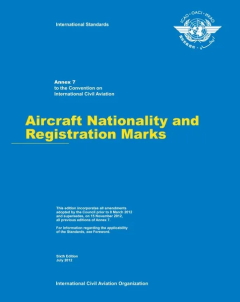
ANNEX 7 Aircraft Nationality and Registration Mark
Annex 7 contains Standards adopted by the International Civil Aviation Organization as the minimum Standards for the display of marks to indicate appropriate nationality and registration which have been determined to comply with Article 20 of the Convention. Standards for Aircraft Nationality and Registration Marks were first adopted by the Council on 8 February 1949 pursuant to the provisions …
- Edisi
- -
- ISBN/ISSN
- ANN-00007-006-01
- Deskripsi Fisik
- -
- Judul Seri
- -
- No. Panggil
- 629.130 2 INT a

Cetak CASR (Civil Aviation Safety Regulation) − Part 33 Airworthiness Stand…
Part 33 of CASR was developed to specify the airworthiness standards for aircraft engines. The airworthiness standards for aircraft engines were in Australian Civil Aviation Order (CAO) Part 102. Part 33 has been based on foreign legislation, specifically the USA's Federal Aviation Regulations Part 33.
- Edisi
- -
- ISBN/ISSN
- -
- Deskripsi Fisik
- -
- Judul Seri
- -
- No. Panggil
- 629.134 35 MIN a
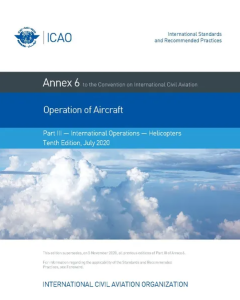
ANNEX 6 Operation of Aircraft
The Standards and Recommended Practices contained in Annex 6, Part III, shall be applicable to all helicopters engaged in international commercial air transport operations or in international general aviation operations, except that these Standards and Recommended Practices are not applicable to helicopters engaged in aerial work
- Edisi
- -
- ISBN/ISSN
- ANN-00006-010-03
- Deskripsi Fisik
- -
- Judul Seri
- -
- No. Panggil
- 629.132 52 INT o

Cetak CASR (Civil Aviation Safety Regulation) − Part 29 Airworthiness Stand…
- Edisi
- -
- ISBN/ISSN
- -
- Deskripsi Fisik
- -
- Judul Seri
- -
- No. Panggil
- 629.133 352 MIN a
- Edisi
- -
- ISBN/ISSN
- -
- Deskripsi Fisik
- -
- Judul Seri
- -
- No. Panggil
- 629.133 352 MIN a
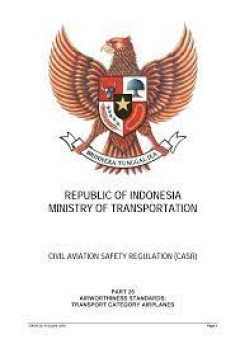
Cetak CASR (Civil Aviation Safety Regulation) − Part 25 Airworthiness Stand…
CASR Part 25 was developed to specify the airworthiness standards for transport category aeroplanes.
- Edisi
- -
- ISBN/ISSN
- -
- Deskripsi Fisik
- -
- Judul Seri
- -
- No. Panggil
- 629.132 3 MIN a
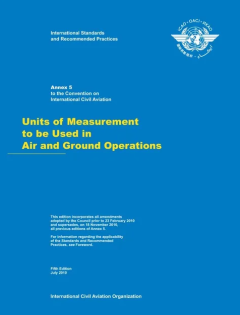
ANNEX 5 Units of measurement
This Annex comprises the Standards and Recommended Practices for dimensional units to be used in air and ground operations. The Annex deals with the standard application of units of measurement and termination of the use of non-SI units. Attachments to the Annex contain material describing the development of the International System of Units (SI) and guidance on the application of the SI, conve…
- Edisi
- -
- ISBN/ISSN
- ANN-00005-005-01
- Deskripsi Fisik
- -
- Judul Seri
- -
- No. Panggil
- 629.134 5 INT u
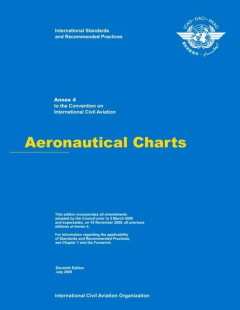
ANNEX 4 Aeronautical Chart
The Standards and Recommended Practices applicable to Aeronautical Charts
- Edisi
- -
- ISBN/ISSN
- ANN-00004-011-01
- Deskripsi Fisik
- -
- Judul Seri
- -
- No. Panggil
- 629.132 54 INT a

ANNEX 4 Aeronautical Chart
The Standards and Recommended Practices applicable to Aeronautical Charts
- Edisi
- -
- ISBN/ISSN
- ANN-00004-011-01
- Deskripsi Fisik
- -
- Judul Seri
- -
- No. Panggil
- 629.132 54 INT a
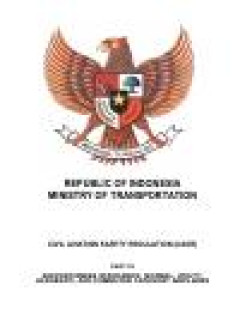
Cetak CASR (Civil Aviation Safety Regulation) − CASR Part 23 Airworthiness …
CASR Part 23 was developed to specify the airworthiness standards for small aeroplanes: Normal category aeroplanes - not intended for acrobatic operation, having up to 9 passenger seats and a maximum takeoff weight up to 5,700 kg. Utility category aeroplanes - intended for limited acrobatic operation, having up to 9 passenger seats and a maximum takeoff weight up to 5,700 kg. Acrobatic cat…
- Edisi
- -
- ISBN/ISSN
- -
- Deskripsi Fisik
- -
- Judul Seri
- -
- No. Panggil
- 629.132 3 MIN a
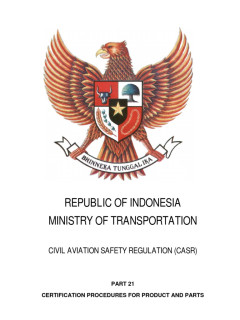
Cetak CASR (Civil Aviation Safety Regulation) − Part 21 Cert. Procedure for…
Part 21 of CASR deals with the certification and airworthiness requirements for aircraft and aircraft parts. It includes rules relating to Type Certificates, Type Acceptance Certificates, Supplemental Type Certificates, Production Certificates, Certificates of Airworthiness and export airworthiness approvals. It also covers the approval of aircraft engines, propellers, and certain materials and…
- Edisi
- -
- ISBN/ISSN
- -
- Deskripsi Fisik
- -
- Judul Seri
- -
- No. Panggil
- 629.130 2 MIN c
 Karya Umum
Karya Umum  Filsafat
Filsafat  Agama
Agama  Ilmu-ilmu Sosial
Ilmu-ilmu Sosial  Bahasa
Bahasa  Ilmu-ilmu Murni
Ilmu-ilmu Murni  Ilmu-ilmu Terapan
Ilmu-ilmu Terapan  Kesenian, Hiburan, dan Olahraga
Kesenian, Hiburan, dan Olahraga  Kesusastraan
Kesusastraan  Geografi dan Sejarah
Geografi dan Sejarah